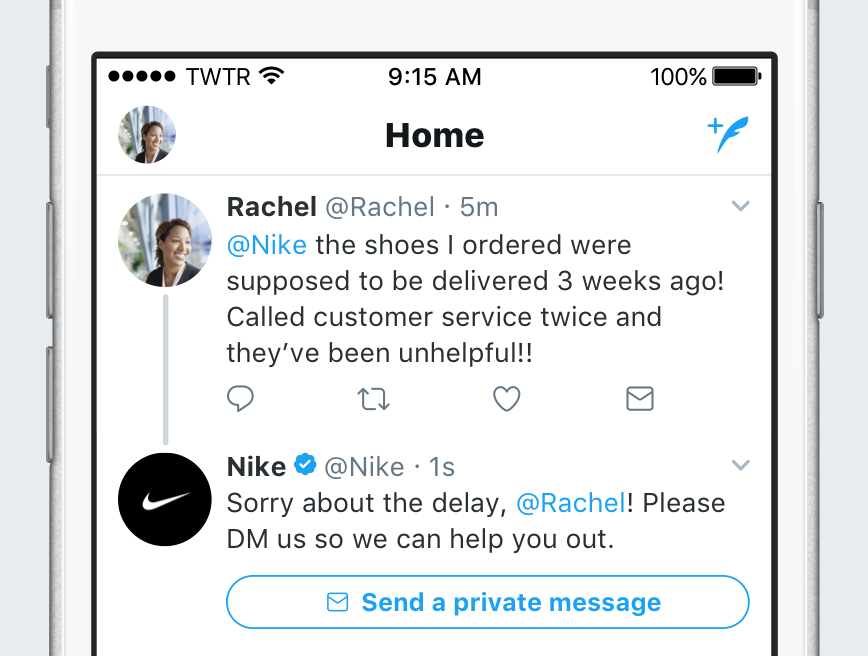B2C: Customer Service
Overview
Twitter is the leading conversation platform between people and businesses with the power of a Tweet. At the same time, Direct Messages (DMs) makes it possible for businesses and consumers to privately share personal information, solve problems and complete transactions all on the same platform where their public conversations take place. This seamless combination of public and private conversation is what makes business messaging experiences on Twitter unique. Our goal was to take that further and build a powerful canvas to establish greater relationships and experiences between businesses and customers.
My role: I inherited this product about 6 months after the kickoff, then was the design lead for about a year before another product designer joined forces with me. Our small team functioned like a start up within Twitter, which allowed us to quickly design, build, test and iterate features while collaborating tightly with the PMs, engineers, product marketing, and business development partners.
DM prompt button
We wanted to make the transition from public to private conversations easier between a customer and a business without requiring the customer to learn Twitter terms (e.g. "What is a DM?").
The DM prompt button ("Send a private message") allows businesses to send a Tweet with a clear call-to-action and one-click experience to move users into a private DM without explaining what or how Direct Messages work, which lead to more successful interactions.
Business profile and Search response indicator
Many businesses have several Twitter accounts and users with customer service questions or issues had little indication which account to Tweet or DM. Beyond that, users never knew when or if they'd receive a response.
Based on research, we knew speedy response times attributed to higher user satisfaction and willingness to pay. By adding service indicators to search results and response times on business profiles, businesses had the ability to set more precise expectations around real-time responsiveness.
Welcome message
Before, users who started a DM with a business opened up to a blank screen, not knowing what to say or how to start the conversation.
Giving businesses the ability to set a welcome message allows them to greet customers in a personable way while guiding the user to engage in the right way.
Quick replies
Quick replies help guide users through a conversation with pre-defined list of options or requests for specific values so the business or bot developer receives a clear, unambiguous response. It creates a quicker and smoother interaction for customers to get to the desired results.
Custom profiles
Custom profiles, while subtle, can make the DM conversation feel more personalized when talking to a human versus a bot. It sets clear expectations so customers know how to interact throughout a single conversation.
Businesses can choose to set a custom avatar with a 48 character max string for each brand agent that accompanies each message.
Location sharing
In order for users to share their location with a business (e.g. bad reception in a specific area) or friend (e.g. "come meet me here"), users had to type it out, which was limiting and time-consuming.
By supporting location sharing as a feature, we are allowing users to easily select a location to share it in a conversation and for businesses/developers to send users a share location prompt to enter into the location sharing experience.
Collaboration approach: This team frequently ran workshops and brainstorms to ideate and iterate on feature designs. Because our research partners were limited, I co-facilitated business partner interviews along the way to inform and receive feedback on our strategy and designs. When it came time to build, because we were building mostly new components across all clients (iOS, Android, Web), I created design documentation with specs to discuss trade-offs and to ensure consistency across platforms.
Press releases: Twitter Blog Post, AdWeek, VentureBeat, TechCrunch (location sharing), TechCrunch (custom profiles), Sprout Social






